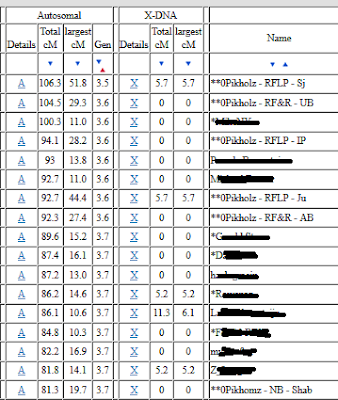The first recorded purchase by our forefathers in what came to be known as Eretz Israel, the Land of Israel, was the Cave of Machpela in Hevron, which was purchased by Avraham as a burial place for his wife Sarah. The purchase - including the surrounding field - and the burial are recorded in the Torah portion that Jews everywhere read yesterday.The City of Our Foreparents - Hevron
David Wilder reports on Facebook that more than 30,000 visitors spent Shabbat in Hevron yesterday to celebrate that purchase.
The Cave of Machpela is the burial place not just for Sarah, but also for Avraham and for Yitzhak & Rivka and Yaakov & Leah, and those couples at the top of our Jewish family tree lived in Hevron. So it is that a visit to Hebron and the Cave is an ultimate genealogy tour.
I have mentioned Hevron in this space on several occasions, with some detail here.
As it worked out, I had the occasion to be in Hevron last Wednesday and I made a long overdue visit to the cemetery in the Ramat Yishai neighborhood. Some years ago, I took it upon myself to record the main Hevron cemetery - that part that has been in use since 1967.
 |
| My Hevron Cemetery website, as it appeared until this week, with over two hundred graves and markers |
For awhile I had made a point of visiting the cemetery at least twice a year and updated the website and JOWBR accordingly. Today the Hevron cemetery serves the small neighboring community of Kiryat Arba and the even smaller Hevron community itself, so each update would be just a handful of new graves. But it has been two and a half years so I expected perhaps two dozen additions..
 |
| The Cave of the Patriarchs |
On previous visits, I would drive up the steep hill to the point where you turn left to the neighborhood and right to the cemetery. There were generally two soldiers and I would tell them where I was going, and be on my way. Now it is different. If you want to go to the cemetery you have to wait for them to call for an armed escort. As I waited, I watched the playful interaction between the soldiers and the Arab children who lived in the area.
 |
| Hallel Yaffa Ariel, May G-d avenge her blood |

There is one new soldier - Major Benaya Sarel, who was killed in battle in Operation Protective Edge. His story (in Hebrew) can be found at the IDF site for fallen soldiers. He is survived by his parents, four sisters, three brothers and his fiancee.
The other new graves are down a flight of stairs to a new section next to the old rabbinic section. That required a bit of redesign of the web page and it now looks like this. (I know, it requires a more professional hand.)
 |
| Yosef Pachuau's epitaph is partly in Mizo |
Others in the newest section are from the old Soviet Union, the US, Argentina, and elsewhere including of course native Israelis. Ashkenazim and Sepharadim. Old and young. Mostly men, some women. One whose stone is blank, but an epitaph of sorts appears on the wall next to the grave.
Housekeeping notes
We pray for all those affected by the terror fires here in Israel. We have just begun asking for rain and here we have another reason to do so. And may this scourge be eradicated from our land.
Program chairs - and people who know program chairs - please note. I have some available dates during my coming US trip, particularly the weekdays between 23 January and 2 February, in the east and midwest and perhaps 14-16 February in the NY/NJ area Perhaps even Sunday the nineteenth. Several topics are available including the Lazarus-Endogamy talk which I presented in Seattle and a new one about Uncle Selig where DNA is not the main point of interest.
The following programs are set, with some others under discussion:
22 January 2017, 1:30 – JGS of Maryland, Baltimore County Public Library, 1301 Reiserstown Road, Pikesville
Why Did My Father Know That His Grandfather Had An Uncle Selig?
29 January 2017, 1:30 – JGS of Greater Philadelphia, Main Line Reform Temple 410 Montgomery Avenue, Wynnewood
Lessons in Jewish DNA: One Man’s Successes and What He Learned on the Journey
5 February 2017, 1:30 – JGS of Cleveland, Park Synagogue East, 27500 Shaker Blvd, Pepper Pike
Lessons in Jewish DNA: One Man’s Successes and What He Learned on the Journey
10 February 2017, 11:00 – ROOTSTECH2017,
Jewish DNA: Successes and Lessons from the Journey
12 February 2017, 1:30 - Orange County JGS - details to follow.
13 February 2017, 7:30 - JGS of Los Angeles, American Jewish University, 15600 Mulholland Drive
Why Did My Father Know That His Grandfather Had An Uncle Selig?




































